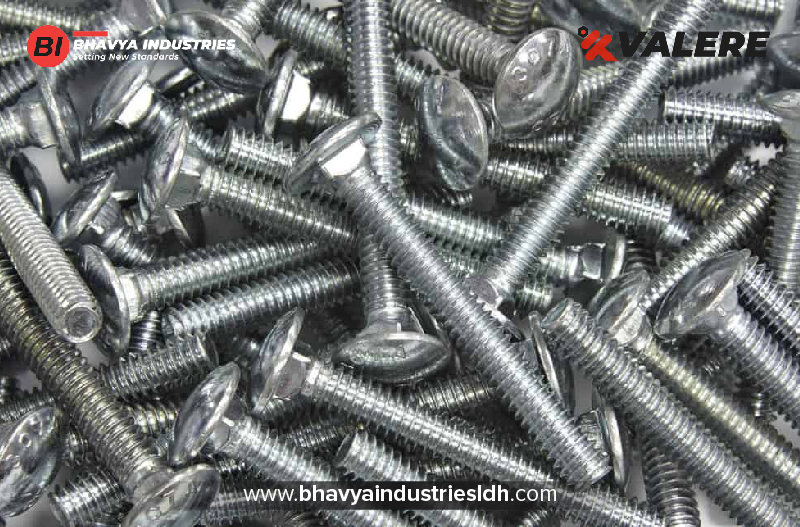Fasteners are the revolutionary invention in making different machines and equipment throughout the industrial field and manufacturing units.
Use of rolled threads in the carriage bolts has improved physical characteristics, provided greater accuracy and a high degree of surface finish.
They are uniformly produced with high rates of production with no wasting of material. Following are the advantages of rolled threads used in carriage bolts-
TENSILE STRENGTH
The cold working for the surface increases the tensile strength and mechanical strength of the carriage bolts while working upon the material.
The enhanced static strength is recorded frequently in different parts.
SHEAR STRENGTH
When a thread is rolled, the fibres of the material are not severed as they are in other methods of screw thread production but are re-formed in continuous unbroken lines following the contours of the threads as in any good forging.
Rolled threads greatly resist the stripping because shear failures must take place across rather than with the grain.
ACCURACY
The production of accurate threads normally needs that close control is exercised over pitch diameter, thread angle, lead, taper, roundness and drunkenness.
There are multiple reasons why it is easier to achieve accuracy on pitch diameter, thread angle, lead and taper by rolling than other processes and, what is often equally important, to maintain that very accuracy over long periods.
Control over roundness and drunkenness, while no easier to maintain by rolling than other processes, is usually within the capacity of the average operator.
RESISTANCE TO FATIGUE
Thread rolling increases the part’s resistance to fatigue failure in several different ways.
Rolling between smooth dies leaves the thread with smooth burnished roots and flanks, free from tears, chatter or cutter marks that can serve as focal points of stress and therefore, starting points of fatigue failures.
Rolling also leaves the surface layers of the thread, particularly those in the roots, stressed in the compression. These compressive stresses must be overcome before the tensile stresses can be built up, which alone, can cause fatigue failures.
UNIFORMITY
If sufficient care is used, it is possible to produce extremely accurate threads by any of the common threading methods, but rolling is unique in its inherent ability to maintain the accuracy of the original setup during long runs of high-speed production. Thread rolling dies do not wear out like other threading tools.
THREAD ANGLE AND LEAD
The accuracy of the thread angle and the lead produced is almost entirely dependent on the accuracy of the dies. In most cases, the thread angle and the lead of the thread on the die exactly reproduce on the material rolled.
The accuracy of the lead produced can also be influenced by the setup of the dies and the material being rolled. Some types of harder and stiffer materials have a tendency to spring back after rolling with the result that the lead on the work may be contracted a very small amount.
In such cases, dies with expanded lead may be used and will uniformly produce threads of the correct lead.
COST EFFECTIVE
Thread rolling stock is smaller in diameter than full size cutting stock, without any of the wasted material. This means no scrap from routine processing.
Thread rolling surface feeds per minute are up to 10 times faster than single point thread cutting. This means significantly reduced costs per thread due to higher quantity produced per roll set.
WRAPPING UP
Manufacturers have many alternatives when joining and assembling today’s high-performance parts.
Superior quality, accuracy provided, finish, improved mechanical properties and economy of production of rolled threads make them the ideal option when “connections matter.” You can check out the different bolts and nuts at the website of Bhavya Industries Ludhiana.



